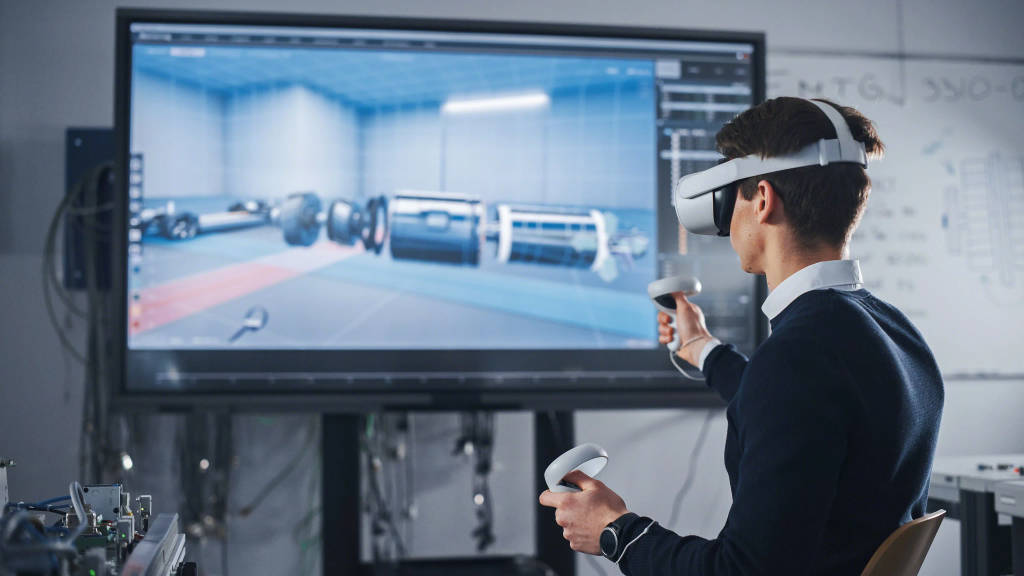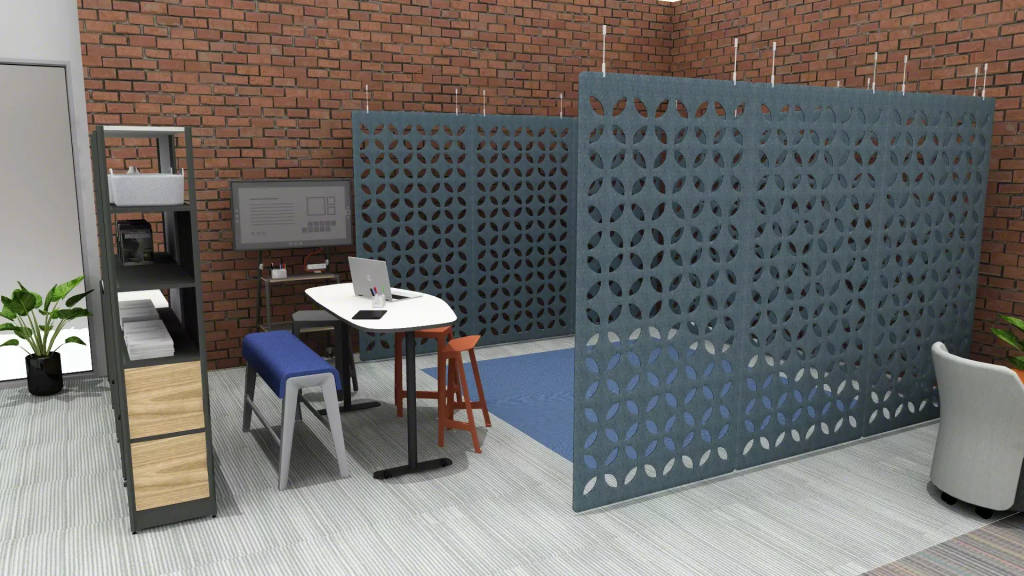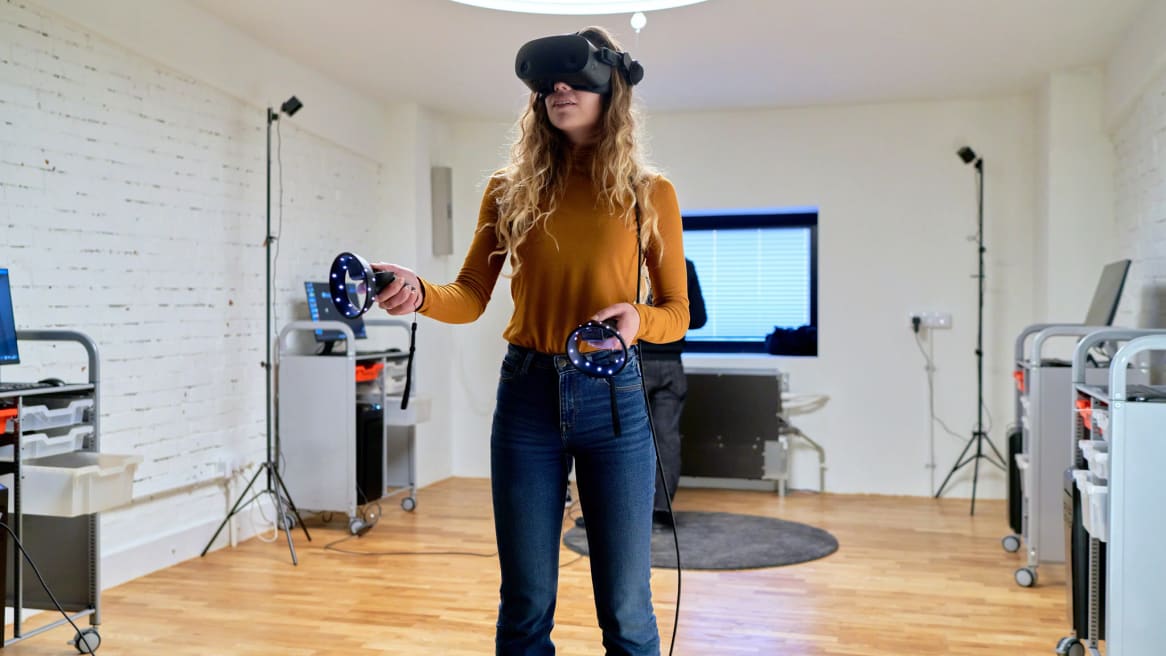Immersive Learning
4 Ways Learning Spaces Need to Change
Imagine plying the ocean depths first-hand to explore exotic underwater worlds, manning the controls as you rocket off to distant planets, walking alongside and talking with historical figures, or taking the crucial measures that save the world from a nuclear meltdown – and doing it all from the safety and security of a familiar classroom.
Those extraordinary experiences are now real-life learning opportunities made possible by emerging technologies like virtual reality (VR) and augmented reality (AR). These programs are able to place people into three-dimensional, computer-simulated environments – unique situations where it would normally be impossible – or too dangerous – for humans to go. It has the power to transport people to distant lands, fantastical universes, or back in time. It has more practical educational applications as well – such as helping medical students practice surgery or industrial arts students learn to weld, or even provide a digital audience for someone rehearsing an important speech.
When VR and AR are applied to particular educational arenas, they can improve learning and student engagement. Research demonstrates that virtual reality training programs, such as immersive learning experiences, are more dynamic and effective, overall, than alternative or more traditional ways of instruction. As we see increased adoption of these technologies, new space typologies will emerge.
Andrew KimWorkspace Futures Researcher, Steelcase
Kim and fellow Workspace Futures researcher Paul Noll have been studying virtual reality applications in education for years, and they understand the unique, hands-on possibilities they offer. “What makes immersive learning different is it engages more of your senses – you’re asking the person to be more fully engaged – even completely engaged – in that experience,” says Noll.
What Is Immersive Learning?
Immersive learning simply means integrating augmented and virtual reality technology into the learning experience. Virtual reality simulates a three-dimensional environment within a device while augmented reality overlays computer generated content onto the real world. Both can be used to replicate a real-world learning environment. Education has been a leading adopter of virtual reality technologies and has the most practical uses for it, says Noll. “What we’re seeing for education is that immersive experiences fill a need. It really helps people teach and learn.”

The benefits of immersive learning are far and wide – and go beyond providing multisensory experiences. Immersive learning offers opportunities for “gamification” in the learning process. Through reward systems, competition and social interaction, students can be motivated and fully immersed in their educational journey. Immersive learning also allows people to approach systems and concepts from multiple angles, fostering better understanding as their knowledge develops. These technologies cater to diverse learners by presenting information in alternative ways and facilitating communication through immersive tools. By providing a safe and controlled environment, students can explore various careers and engage in real-world simulations that give them valuable practice and repetition. “It’s hard to understand certain concepts in two-dimensional ways,” says Kim. “Think about healthcare, chemistry or any hands-on specialty. You can understand it better in a virtual three-dimensional experience.”
Designing Immersive Learning Spaces That Work
The problem is, traditional classrooms and learning spaces globally aren’t always suited to support such advanced educational approaches. While immersive learning is a highly socialized form of education, it can be isolating when not conducted properly because users are so locked into the virtual world around them. Learning environments need to be reimagined to support immersive learning experiences. Steelcase researchers and designers have developed key considerations and ways space better support immersive learning and its technologies.

Safety
People want to move. They’re tired of interacting with other people and content on a two-dimensional screen. Participating in a virtual world – walking, turning, jumping and using their arms – can help, but movement also presents challenges. The environment needs to be open enough to provide space to move and include soft, flexible furniture and boundaries to reduce injuries. Floor textures help the person retain spatial awareness, but also prevent slipping and falling. Virtual reality headsets are so engrossing that people can get motion sickness because the environment is moving, but they aren’t. To counteract this effect flooring can be a grounding element for the user, as well as fans in the room to simulate motion.
Collaboration
Virtual reality can be incredibly collaborative if done correctly, or incredibly isolating if not. A key component of elevating the immersive learning experience is to provide a display that allows all learners and teachers to view the experience collectively. By adding a screen, learners can engage and interact with the content simultaneously, fostering collaboration and a sense of community. It is also beneficial to create a perimeter or outfield viewing area for other learners who may not be directly engaged with the shared display. This allows them to observe and learn from a distance, but feel included. Additionally, it is beneficial for the instructor to have a view into the learner experience, enabling them to guide and prompt as appropriate. This visibility allows instructors to provide real-time feedback, address individual needs, and ensure a more personalized and effective learning journey for all participants.
Flexibility
The incorporation of virtual reality zones and large, projected displays within educational spaces is essential to serve diverse modes of learning. To ensure versatility, a good VR room should be designed with flip-top, nesting tables and chairs that allow for a variety of learning activities like group discussions, hands-on experiments, presentations or individual research. Moreover, considering the rapid pace of technological advancements, it is important to create adaptable spaces that can accommodate future innovations. This flexibility will ensure new tools and technologies can be integrated as they emerge, keeping the learning environment up-to-date.
Storage
Virtual reality tools and technology are sensitive and expensive, so storing them safely and securely shouldn’t be an afterthought. Lockable storage is needed to keep tools safe so access to them can be regulated. They also need to be charged when not in use, so storage should be able to accommodate both devices and their charges. Mobile storage is also important so that equipment can be shared between classrooms but remain safe and secure.


